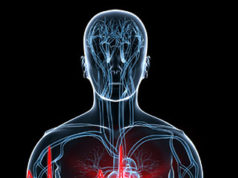
Primary results from the REDUCE LAP-HF trial indicate that a novel interatrial shunt device (IASD, Corvia Medical) significantly reduced pulmonary capillary wedge pressure (PCWP) during exercise, compared with a sham procedure, in patients with heart failure and preserved ejection fraction (≥40%). Further studies are required to see if the mechanistic effect observed with the IASD will translate into sustained improvements.
Ted Feldman (NorthShore University Health System, Evanston Hospital, Evanston, USA) and colleagues report in Circulation that there is a lack of effective therapies for patients with heart failure with preserved ejection fraction. They add such patients are known to have left ventricular diastolic dysfunction, which leads to elevated left atrial pressure and volume overload “with subsequent elevation in pulmonary venous pressures, particularly during exertion, resulting in symptoms of dyspnoea and exercise intolerance”. Furthermore, the authors observe that unloading the left atrium, “with the goal of reducing pulmonary venous pressure, may lead to improved symptoms and outcomes in these patients”.
According to Feldman et al, the IASD was developed because it has been hypothesised that an interatrial septal communication can unload the left atrium in the setting of left atrial pressure “transferring the excess of left atrial blood volume to the larger reservoir of the right atrium and systemic veins, thereby limiting the increase in left atrial pressure and pulmonary venous pressures during exercise”.
The purpose of the REDUCE LAP-HF trial was to determine the safety and effectiveness of the ISAD in patients with heart failure with preserved ejection fraction. Feldman et al comment: “We hypothesised that the IASD reduces PCWP during exercise in patients with heart failure and ejection fraction ≥40% by unloading the left atrium”.
In the study, 44 patients were randomised be implanted with the IASD or undergo a sham procedure (femoral access with intracardiac echocardiography only). The IASD, the authors write, consists of a one-piece, self-expanding metal cage that has a double-disc design with an opening barrel in the centre. “The implant is radiopaque and echogenic to allow for imaging during the implantation process. The left atrium side of the implant is flat so the legs rest flush against the left atrium side of the interarterial septum, minimising the left atrium profile of the deployed implant. The right atrium side is curved to accommodate variable interatrial septal wall thickness, with only the legs contacting the right atrium side of the interatrial septum,” they explain.
At one month after implantation, the IASD group had a significantly greater reduction in PCWP during exercise than did the sham procedure group (p=0.028 for the difference). Thus, the REDUCE LAP-HF trial met its primary endpoint. However, on secondary outcome analysis, there were no significant differences between groups in change in peak PCWP at one month: -3.5±6.4mmHg for the IASD group vs. -0.5±5mmHg for the control group (p=0.14)—though the study was not powered for this endpoint. There were no periprocedural or one-month major adverse cardiac, cerebrovascular and renal events (MACCRE) associated with device (the study’s safety endpoint).
Feldman et al say that the findings of REDUCE LAP-HF “are important” because they are the first randomised data for the IASD. They add that the results also indicate that the device could have beneficial effects for patients with heart failure with preserved ejection fraction and also for those with mid-range ejection fraction (for whom, there are also no proven effective therapies) “setting the stage for a larger-scale randomised clinical trial powered to examine the effects of the IASD on symptoms, quality of life, exercise capacity, and clinical outcomes”.

Sanjiv Shah (Northwestern University Feinberg School of Medicine, Chicago, USA) presented the results of REDUCE LAP-HF at the 2017 American Heart Association scientific sessions (11–15 November, Anaheim, USA). The paper in Circulation was published simultaneously.













